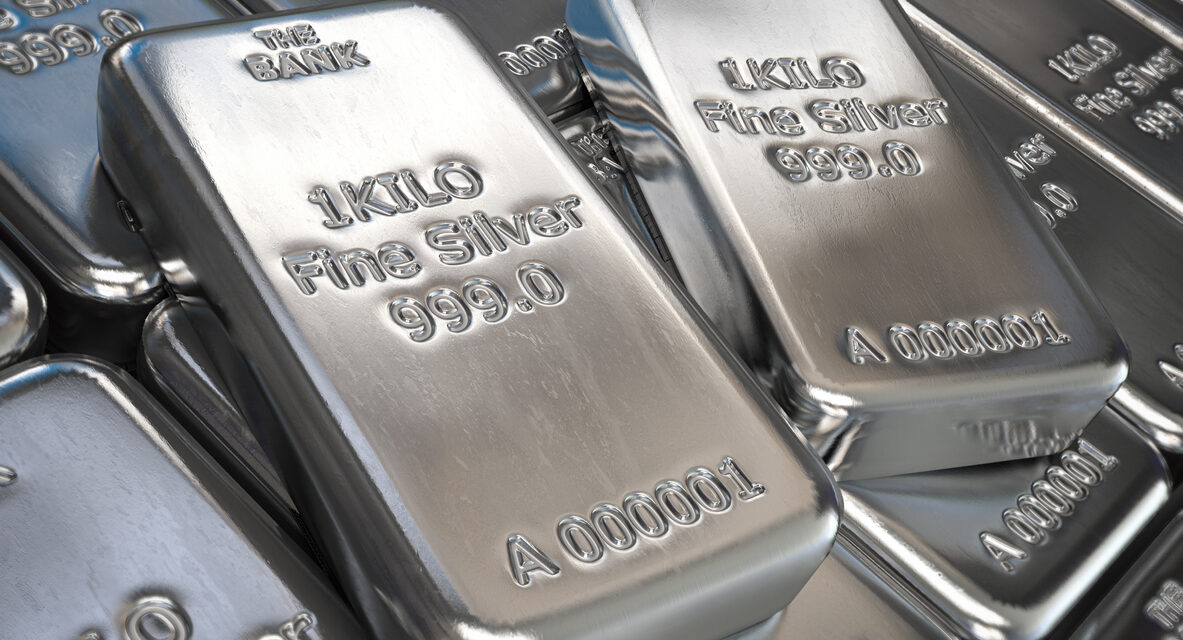Author Katrina Shanks, CEO Financial Advice NZ. Article originally published in stuff.co.nz.
OPINION: This week, China reported its inflation rate was weaker than expected (it was actually unchanged), compared to a year ago, and we felt the impact in New Zealand.
Analysts immediately predicted the impact would affect the whole Asean region, and particularly by companies exporting to China, including here.
And as sure as night follows day, our share market dipped, throwing the jitters once again into investors who have being watching an overall increase in the value of their shares this year, even if it had been a bit of an up-and-down ride.
At such times, re-evaluating your investment options is a wise thing to do. You may not move anything around, but there’s never a bad time to check.
There are other investment options you can consider which are not as mainstream. So what is another investment option?
One of my friends said he thought silver was worth a closer look.
Silver has stabilised recently (at US$23.20 an ounce/23 grams), much where it started the year, and perhaps as the global squeeze continued it was a good time to buy before world economies recovered.
Another friend suggested gold was worth a look.
Gold, of course, has long been a long-term investment favourite, but it does cost a lot more due to its scarcity.
Both metals are considered good hedges against inflation and can help diversify against riskier investments and the bouncier ride being experienced by shares.
But remember they don’t offer a regular income stream in the form of interest or regular dividends. Your profit is simply the difference between what you buy and sell it for.
So, let’s look at silver. Is now the right time to buy into it?
First, you need to understand there are many ways to invest in silver.
You can buy silver coins and bullion from any number of reputable traders. Just make sure you do your research into them first to make sure they’re legit and have a sound track record.
With such physical investments, you also need somewhere to store it. Many of these companies will do that for you, though that will incur an ongoing cost, like a rent for the security and space they offer.
Or you can invest in silver futures, where you can bet on or against your silver’s future value, much like you might do with shares. Or you can simply buy shares in silver mining companies or invest in silver exchange-traded funds. (these EFTs own financial assets such as stocks, bonds, currencies, futures contracts, and/or commodities such as silver).
So, is now a good time to invest in silver?
It’s important to remember that though silver is generally seen as a safe investment, it is subject to highs and lows, perhaps even more so than something like gold, which is more stable (if less exciting!). For example, in the past 10 years or so silver has moved up and down between $14 and $28 an ounce.
That makes it not necessarily an investment for those who like certainty.
But it can pay rewards for those with patience and good timing.
Silver is more tied to the health of the global economy than most other precious metals.
Thanks to its superior electrical properties and durability in harsh conditions, half of all the silver mined each year is used in heavy industry and high technology: medical applications, batteries, nuclear reactors, semiconductors for computers, solar panels, and touch screens.
It’s also a vital component in electric vehicles, sales of which are soaring. Last year 16,223 new EVs were registered in New Zealand, compared to 6897 in 2021.
The Silver Institute estimates that by 2025 something like 90 million ounces of silver will be needed each year for vehicle production, out of estimated world supply (from mines and recycling) of 1 billion ounces.
It’s because of these industrial uses that the silver price can be quite sensitive to market shifts and make it a more volatile investment than, say, gold.
On the other hand, being in such high – and increasing – demand can also make it a good candidate for a longer-term investment.
It’s also worth noting that when economies take off, demand for silver tends to grow, so those who have invested will no doubt be watching the next months with interest as world economies recover.
One advantage silver has over other precious metals is it tends to be cheaper ($23 versus $1,900 for gold this week), making it more accessible to small retail investors who wish to own a precious metal as a physical asset.
A couple of last points:
- Investing in precious metals can be an effective hedge against an economic downturn. Their value often moves in the opposite direction to shares, which is why some investors favour them to try to protect their money.
- One of silver’s biggest investment disadvantages is its volatility. If you’re not prepared to put up with big up’s and down’s, you may want to look at other options.
- It’s not always easy to sell in a hurry should you need to.
- Metals can be a risky asset, and many advisers tend to caution not having them comprise more than around 10 per cent of your overall portfolio.
As always, it’s important you understand your risk profile and how your investment portfolio is constructed to ensure it is balanced correctly.
I don’t have any metals in my investment portfolio; however, I think it is worthy of a conversation with my financial adviser.
As my financial adviser would say, it’s all about understanding your risk profile, understanding when and how you will need to access the investment, and the need to have the correct portfolio balance.





